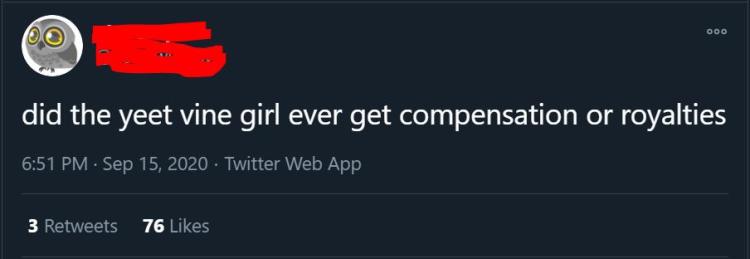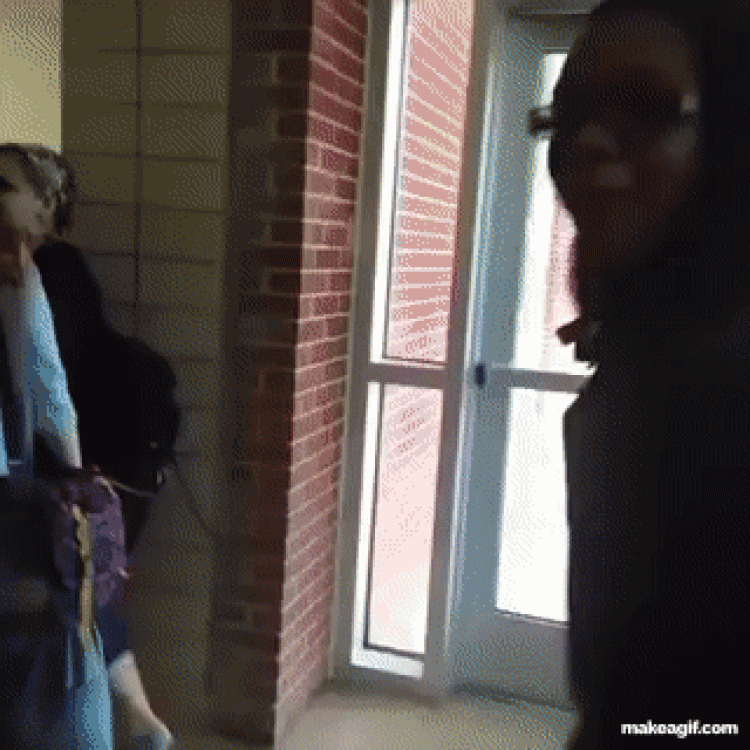To Yeet or Not to Yeet?: African American Slang Beyond Vine
The combination of language and gesture in yeet Vines may help us understand how African American slang becomes incorporated into the lexicons and identities of non-African American speakers.
Name: Caeli McCusker
Course Title: Language and Digital Media (LING 3800)
Advisor: Prof. Kira Hall
LURA 2021
Research on the use of language in digital media has shown us how slang that originates on one platform can quickly spread across other platforms to become used more broadly as Internet slang. The recently defunct platform called Vine, a video sharing site allowing users to create short videos of 6-7 seconds, is an important source of Internet slang. Slang terms like yeet, on fleek, and gucci all found their origins in Vine. My research project for Professor Kira Hall’s course “Language and Digital Media” aimed to understand why Vine slang spreads so easily. One reason is that Vine videos are easily quotable for their short nature and are also often comedic: they live on when people quote them for reasons of humor in everyday conversation. But there is another reason why Vine slang spreads so easily, and this has to do with how these terms are tied to a particular body movement or gesture in the Vine videos that include them.
Consider, for example, the two Vines below, which feature speakers using the term yeet in different ways. The first video, uploaded in 2014 and thought to be the “original” yeet Vine, suggests that yeet is a word you yell when throwing your arms in a downward movement. The second video, uploaded four years later, suggests that yeet is a word you yell when throwing an object. Notice how both uses of yeet, in spite of these seemingly different meanings, are associated with a body movement that involves throwing the arms downward. My research suggests that the tying of slang to a movement of the body, as in these videos, contributes to the widespread circulation of these terms.
- Original “Ya Yeet” Vine, uploaded to YouTube Apr 2, 2014 https://youtu.be/xUEqDQOjAlA
- Other original “Yeet” vine, uploaded to YouTube Feb 28, 2018 https://youtu.be/JqdDrYuefEQ
This leads me to the question of how these terms circulate beyond the communities originally associated with their use, such as African American speakers in the case of yeet. When I was researching how the word yeet was used on Twitter, I discovered that speakers fall into two groups of users: those who reference the slang term’s African American English (AAE) origins and those who attribute no connection to the term’s AAE origins. The latter group is exemplified by the two tweets below. The first tweet references the Vine user in the 2018 video above and asks whether she received appropriate compensation, implying that she was responsible for coining the term, while the second tweet makes comic use of the term’s later association with throwing an object. Interestingly, the users who seem unaware of the term’s AAE origins are also more likely to use yeet for reasons of humor, as in the second tweet. How did yeet travel beyond its original formulation and become part of the “communicative repertoires” (Rymes, 2012) of a broader set of speakers?


The association of gesture and meaning is powerful for remembering. Digital media scholar Stefka Hristova (2013) explored this link in her analysis of the role played by bodily hexis in the “Doing a Lynndie” gesture that circulated on a video-sharing site after the Abu Ghraib torture controversy. A term from sociologist Pierre Bourdieu, bodily hexis is a way of “standing, speaking, walking, and thereby feeling and thinking” that is given meaning by cultural norms. As with the yeet poses below, the movement repeatedly seen in the Vine is memorable and leads to reproductions in new contexts, also known as “recontextualization” (Baumann and Briggs, 1990). In other words, the circulation of yeet is importantly tied to the gestures that coordinate with it. Once imprinted on the body through gesture, yeet is easily recontextualized in new formats in ways that move beyond the meaning of the term displayed in the original Vine.


When terms like yeet are recontextualized in new contexts, such as Twitter, the meaning of these terms is moved even further from the original source. In linguistics, the phenomenon by which terms move away from an original source and have a weakened link with the source material is called indexical bleaching (Squires, 2014). Users who hang onto the original context of yeet often do so because they identify with the term’s Black creators and its origins in AAE. However, the indexical bleaching of words like yeet allows such vocabulary to be incorporated into the mainstream seamlessly without recognition to the Black community.
The humorous use of embodied slang terms such as yeet is a case in point. As sociolinguists have shown, when AAE is spoken by non-AAE speakers it is often used in a “mock” way—for comedic effect rather than as a legitimate way of speaking. The AAE-originating Vine slang I researched is often used in this way to establish communicative repertoires that make their users appear funny and laidback. However, there is another group of users out there who feel deeply that the AAE origins of these terms should be acknowledged. The reliance of a term like yeet on gesture may help us understand why words with AAE origins continue to populate Internet slang and humor, without this acknowledgment.
Bibliography
Bauman, R., & Briggs, C. L. (1990). Poetics and performances as critical perspectives on language and social life. Annual Review of Anthropology, 19(1), 59–88. https://doi.org/10.1146/annurev.an.19.100190.000423
Hristova, S. (2013) “Doing a Lynndie”: Iconography of a Gesture, Visual Anthropology, 26:5, 430-443, DOI: 10.1080/08949468.2013.833830
Squires, L. (2014). From TV Personality to Fans and Beyond: Indexical Bleaching and the Diffusion of a Media Innovation. Journal of Linguistic Anthropology, 24(1), 42-62. doi:10.1111/jola.12036


